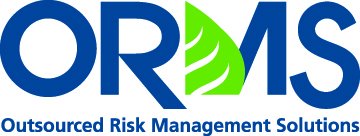5 Things That Go Bump in the Night: Don’t Let SBA Environmental Due Diligence Become a House of Horrors
Prepare Now For Connecticut’s New Release-Based Cleanup Program
October 20, 2025A Season For Gratitude
November 21, 20255 Things That Go Bump in the Night: Don’t Let SBA Environmental Due Diligence Become a House of Horrors
Environmental due diligence has always been an important consideration for SBA lenders. As the spooky season approaches, however, lenders have begun hearing extra creaks in the night: staffing changes at the SBA, increased audit focus, and a wave of policy updates. What this means is that lenders relying on SBA loan guarantees must take prudent steps today to avoid scary surprises tomorrow.
Here are 5 recent trends we’re keeping a close eye on this Halloween:
1. Ignore New Environmental Review Requirements in Liquidation At Your Peril
As of November 1, 2025, the SBA’s new Standard Operating Procedure (SOP 50 57 4) for 7(a) loan servicing and liquidation goes into effect. Key features include:
- An increase, from $5,000 to $10,000 to the personal property liquidation value threshold for certain actions.
- The addition of a new loan status category, “SBA Uncollectible,” that triggers referral to Treasury collection.
- Revisions to align with environmental review requirements in SOP 50 10 8.
For SBA lenders the message is clear: the cost of ignoring environmental issues in servicing and liquidation can jeopardize the guaranty or trigger repair actions. Lenders must address environmental risk up front because you now have fewer remediation options in liquidation.
2. CDC/504 Third‑Party Lenders (TPLs) Given Expanded Responsibility For Environmental Due Diligence
Lenders participating as the first‑lien third‑party lender (TPL) in an SBA 504 Loan Program are seeing greater inclusion in communications, oversight and lien‑arrangement expectations. Per the National Association of Development Companies’ (NADCO’s) Technical Issues Memo 30-25 (August 5, 2025), the SBA has begun copying Third Party Lenders (TPLs) on email notifications to CDCs of 504 loans being selected for Payment Integrity Information Act (PIIA) reviews. For environmental due‑diligence, the takeaway is: if you’re the TPL or senior lender, don’t assume someone else is handling the environmental review — you will be on the hook.
3. New Environmental Due Diligence Requirements Under SOP 50 10 8
Earlier this year, the SBA released SOP 50 10 8, which introduced major changes to how the SBA treats environmental reviews for both 7(a) and 504 loans. Key provisions include:
- Explicit notification that failure to comply with the environmental provisions “may result in a denial of SBA’s guaranty.”
- A centralized documentation and submission process that includes uploads via E‑Tran and notifications via dedicated email channels.
- Clarification that environmental reports must now be dated within one year of issuance of the SBA loan number.
In practical terms, these changes mean that environmental due diligence can no longer be treated as an afterthought. Both lenders and CDCs must upgrade their workflows, understand the new submission protocols, and ensure compliance with all report timing and retention requirements.
4. SBA Delegates Environmental Due Diligence to CDCs
As of March 2025, the SBA officially shifted responsibility for environmental review in certain programs (notably 504 loans) to CDCs. Procedural Notice 5000‑866054 (effective March 20, 2025), states that the revised guidance applies to non‑delegated processing and signals that CDCs (and their underwriting/compliance teams) must now carry the environmental risk burden. Critically, this means that while the third‑party lender may not physically perform the review, you must verify the CDC or sponsor did so—and that the file includes the required environmental documentation before closing.
5. Expect More Scrutiny on Environmental Compliance in SBA Audits
The final fright comes in audit risk. The SBA has openly expressed concern about spikes in liquidation and foreclosures, and suggests lenders have not always followed proper environmental due‑diligence procedures. Given the tightening of due diligence requirements in both the origination and liquidation stages of SBA lending, lenders should anticipate that environmental files will be a target in SBA audits and guaranty purchase reviews. Missing or weak environmental documentation could trigger guaranty denial or require lender indemnification.
What Lenders Need to Do Now
To avoid the “things that go bump in the night,” lenders — and their internal risk/compliance teams — should take the following actions immediately:
- Update internal policies and checklists to reflect the latest SBA requirements, laid out in SOPs 50 10 8 and 50 57 4.
- Ensure lending workflows include environmental reviews upfront, rather than in post-closing. It’s critical to review and approve all required due diligence, including environmental questionnaires, records searches, and Phase I and Phase II ESAs, and retain documentation accordingly.
- Verify third‑party participants have completed all required environmental reviews and that you possess copies of the key documents.
- Confirm document timing and submission protocols have been followed: Ensure that all environmental reports are dated within one year of the SBA loan number issuance and all uploads and notifications are sent properly through E‑Tran or email, as required.
- Prepare for the audit: Make sure you retain and have ready access to all critical documents and communication, including the environmental investigation report, reliance letter, email approvals (if any), and evidence of mitigation or “Other Factor(s)” justification where applicable.
- Educate your underwriting and servicing teams: The SBA is no longer treating environmental risk as a “check‑the‑box” item. Instead, they’re viewing it as potential justification for waiving guarantees. Make sure everyone involved understands the risk.
By proactively addressing these five “bumps,” lenders can protect both the SBA guaranty and their institution’s exposure — and avoid unpleasant scares during a future audit or liquidation scenario.
